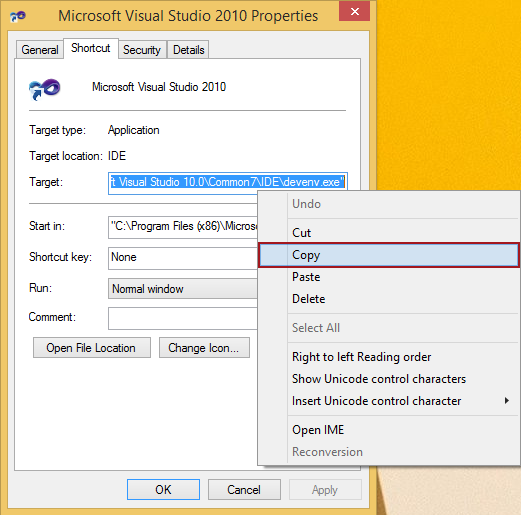-
标题
How to remove add-ins just from Visual Studio while retaining them in SQL Server Management Studio -
说明
Applies to
ApexSQL Complete, ApexSQL Refactor, ApexSQL Search, ApexSQL CompareSummary
This article describes how to uninstall (manually remove) one or more ApexSQL add-ins from Visual Studio, without affecting the functionality in SQL Server Management Studio.In this article, the example covers removing ApexSQL Complete, but the manual remove process works the same way for all ApexSQL add-ins that support integration into Visual Studio.
-
解决办法
Applies to
ApexSQL Complete, ApexSQL Refactor, ApexSQL Search, ApexSQL CompareSummary
This article describes how to uninstall (manually remove) one or more ApexSQL add-ins from Visual Studio, without affecting the functionality in SQL Server Management Studio.In this article, the example covers removing ApexSQL Complete, but the manual remove process works the same way for all ApexSQL add-ins that support integration into Visual Studio.
Quick tip:
If ApexSQL Complete is the only ApexSQL add-in installed on machine then the ApexSQLStub folder needs to be deleted, otherwise the ApexSQLStub must remain intact
After deleting the ApexSQL Complete folder, it’s essential to merge the resource metadata that describes menus, toolbars, etc. from all available VSPackages, so you don’t encounter any errors on Visual Studio start up.
To do this, you must open Command Prompt as an administrator:
Paste and run the following command:
"C:\Program Files (x86)\Microsoft Visual Studio 10.0\Common7\IDE\devenv.exe" /setup
Please note the command is different for Visual Studio 2012, 2013, and 2015.
Visual Studio 2012
"C:\Program Files (x86)\Microsoft Visual Studio 11.0\Common7\IDE\devenv.exe" /updateconfiguration
Visual Studio 2013
"C:\Program Files (x86)\Microsoft Visual Studio 12.0\Common7\IDE\devenv.exe" /updateconfiguration
Visual Studio 2015
"C:\Program Files (x86)\Microsoft Visual Studio 14.0\Common7\IDE\devenv.exe" /updateconfiguration
You will not see any confirmation on success, but, barring any errors, the command will be executed successfully and you are ready to go.
Bear in mind, if you copy the code from above directly from ApexSQL website, you might get the message that indicates the following:
This is due to Unicode characters and quotation mark incompatibility when the code is copied to the clipboard.
The best practice is to copy – paste the location within the Windows environment. Locate the Visual Studio instance on Desktop or in Programs, right click it and select Properties. Then, select the path in the Target box, copy it and then paste it into Command Prompt:
Quick tip:
If you have more than one IDE installed, and you want to remove the add-in from multiple instances of Visual Studio 2017, repeat the same steps, and make sure to change the folder path in both steps




